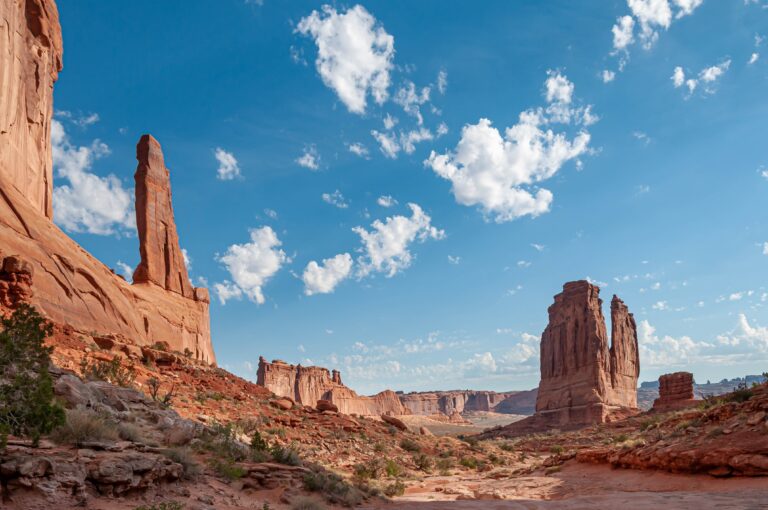
Utah state parks and national parks sum up what it means to be in the Wild West. Once crossed by pioneers, Mormon settlers, cowboys and bandits, they are now iconic America writ large. Encompassing colossal Utah canyons and gorges, they showcase the sheer scale of the great outdoors in the USA. And they offer real adventures, whether you’re looking to strap on the rock-climbing harness, hop in the saddle, or go hiking in untamed wildernesses.
There’s no question that the state’s reserves are among the top places to visit in Utah. You’ve got all sorts to get through, from the deep gorges of the Zion National Park to the hoodoo spires of Bryce Canyon. And that’s not even mentioning the wealth of more hidden Utah state parks, which come with cheaper entry fees and lesser-known trails.
If all that’s tempted you, be sure to read on for a selection of 10 of the prime places to sample Mother Nature in the beloved Beehive State…
1. Zion National Park
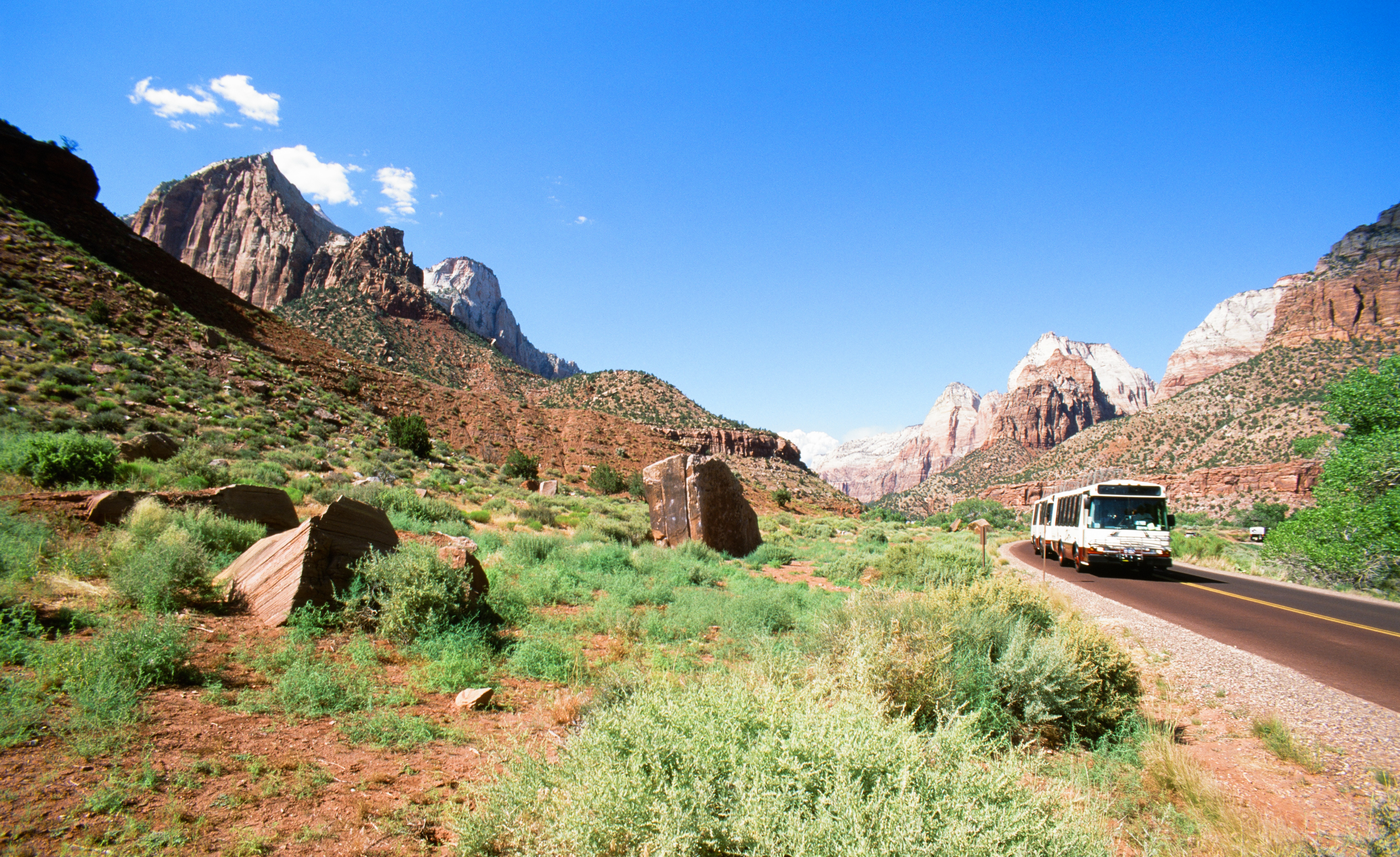
Wow! Simply jaw-dropping and gasp-inducing at every turn, Zion is a stunner. It’s up there with the most amazing places to visit in Utah, the United States, and the world! At just shy of 600 square kilometers, it covers a whopping chunk in the south-western portion of the state. There, it comes carved and cleft out by glowing red canyons. They are dashed with the verdant figures of scented ponderosa pines, which keep watch over the wiggling Virgin River below.
Most travelers will stick to the hair-pinning roadway that travels right through the middle of it all. However, as with most Utah state parks and national parks, it’s always worth leaving behind the wheels for a spell. Doing that will open up the challenging route to the lookout points on Angels Landing. Other treks include the walk through the steep-sided gorges of The Narrows and the path by the Emerald Pools on the river’s edge.
During summer, you can enjoy the whole place from the comfort of a shuttle bus on the Zion Canyon Scenic Drive. At other times of the year, there’s restricted access to Zion as snow and ice descend. Between November and March especially, it’s always worth checking what trails are safe, and what roadways remain open.
2. Canyonlands National Park
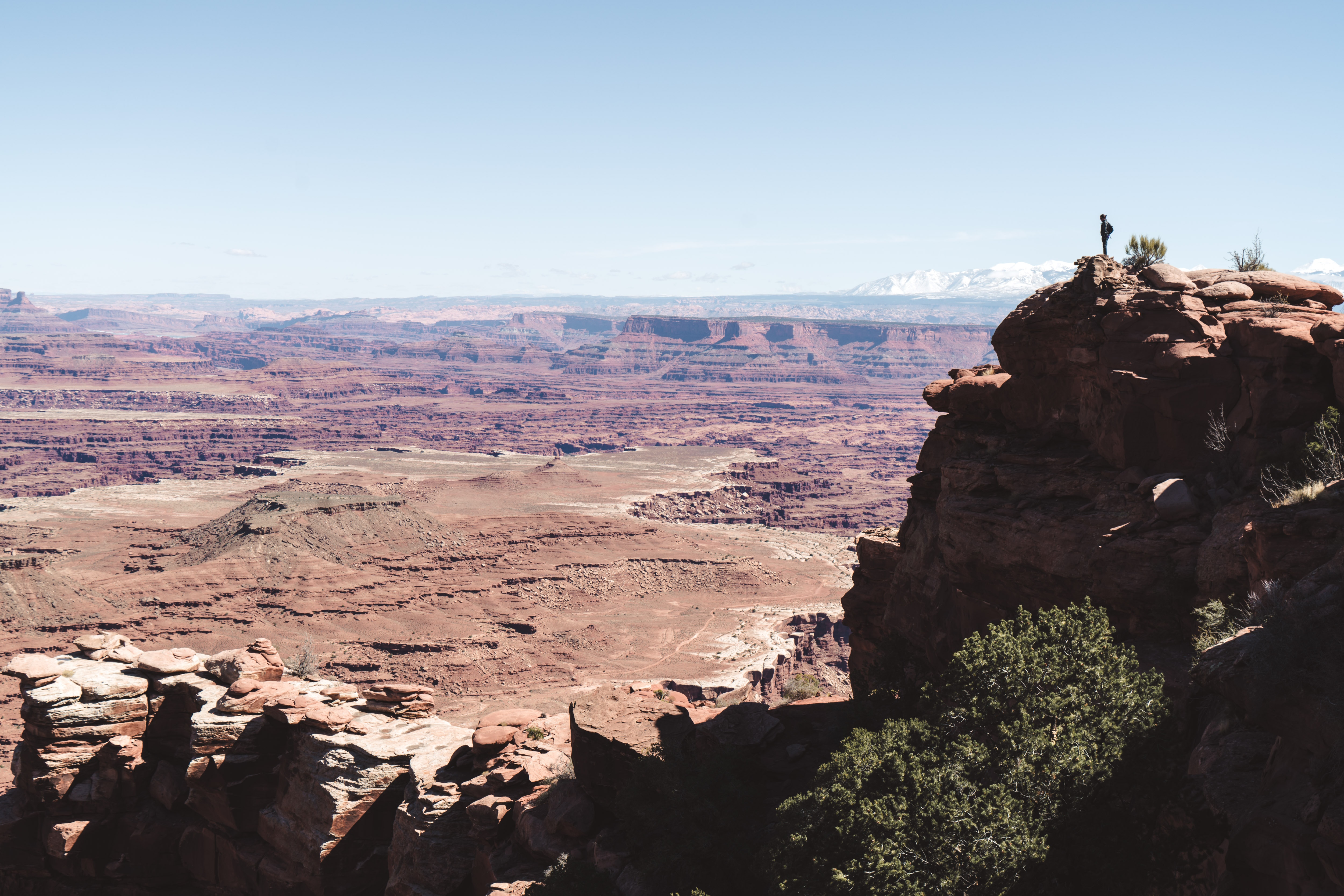
Straddling the mesas of the Moab in the depths of south-eastern Utah is the so-called Canyonlands. You find them encompassed by the Canyonlands National Park and its great gorges. The whole lot has been whittled out over millions of years by the courses of the Colorado River – the same waterway that gave the world the Grand Canyon!
One of the most visited sections of this stunning option among Utah national parks has to be the Island in the Sky. It’s a colossal sandstone slab that extends over hundreds of thousands of acres. Within are high overlooks and snow-dusted ridges (at least in the winter). They quickly give way to sheer-faced rock buttes that loom like cathedral churches over the red-tinged floor beneath.
In total, there are several designated areas to explore. Some, like The Needles, have jutting rock spires. Others are better known for their pre-historic rock art and cave dwellings. Entry to this gorgeous jewel of the Utah canyons costs $25 per motorbike and $30 per vehicle.
3. Arches National Park
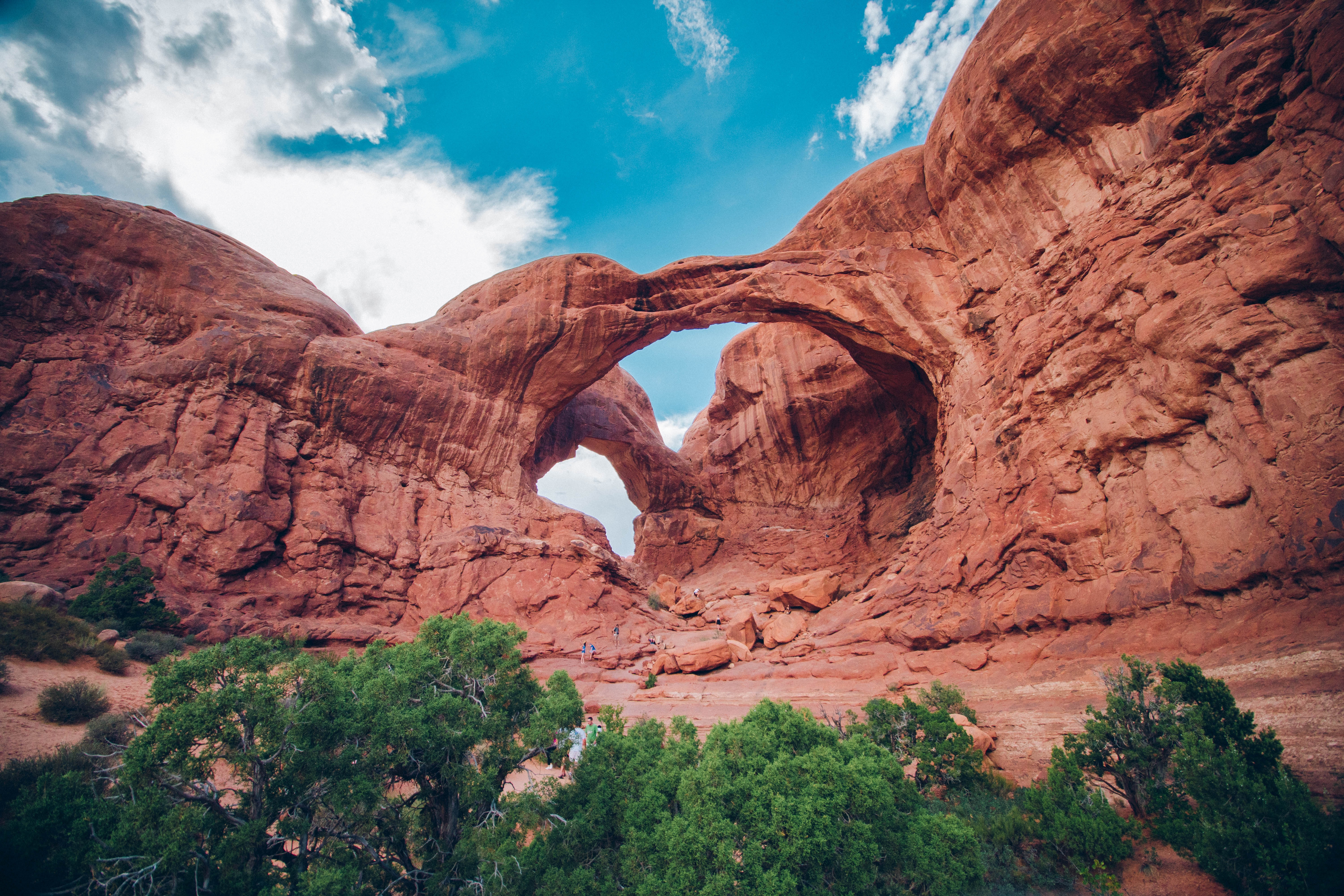
Looking for a glimpse of those legendary Utah arches? This is the place to come. Just as the name hints, Arches National Park is a wonderland of stone-carved features and geological treats. In fact, there are estimated to be as many as 2,000 natural rock bridges within its boundaries. They come in all shapes and sizes – some thin, others bulbous. And they shimmer ochre and orange under the endless Wild West sun!
A few of the highlights you won’t want to miss include the Delicate Arch and the Landscape Arch. The first is famous for its 52-foot height and scenic position over the snow-capped peaks of Utah in the distance. The second is one of the longest rock arches in the Utah deserts. What’s more, it’s the fifth-longest natural arch in the whole world!
The main place for camping in Utah arches territory is the Devils Garden campground. That’s beautifully located close to most of the trailheads that can take you out to see these wonders. It’s framed by a number of high stone boulders, while the camping pitches are secluded thanks to the presence of desert scrub.
4. Capitol Reef National Park
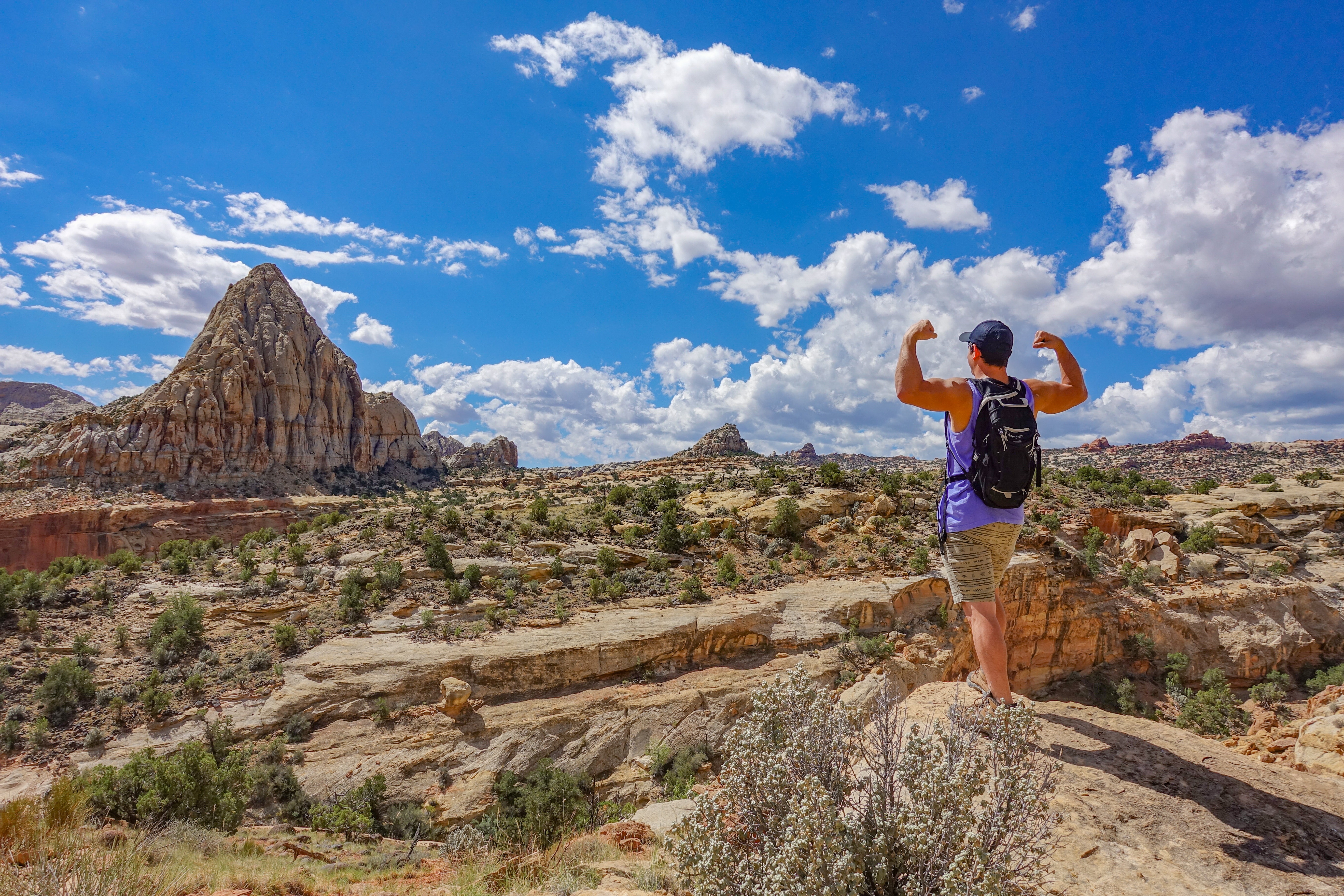
The heart of southern Utah is taken by the crags and gorges of the Capitol Reef National Park. It’s the epicenter of the Waterpocket Fold – a unique natural phenomenon that extends for nearly 100 miles through the territory. There, you’ll be able to gawp at fluted mesas of Navajo Sandstone and see red-tinged cliffs drop away from sheer mountaintops.
Certain peaks and summits are sure to take the breath away. The Navajo Dome is a case in point. Sat like a blob of mayonnaise between dashes of pines and cedars, it’s got a peaked cap like a witch’s hat. Then comes the soaring Golden Throne. At 7,042 feet above sea level, it’s splashed with yellowish-gold hues that make it stand out from the rest. You can also spy out a mix of Utah arches, caves, and layered rock hoodoos at Capitol Reef. It’s a true geologist’s dream!
Those looking to do camping in Utah backcountry should make for the Fruita Campground. It’s a green speck in the middle of the desert, offering over 70 pitches in the middle of the Capitol Reef. Around it, you can discover some of the region’s curious orchards, which offer succulent plums, apples, cherries, and pears.
5. Dead Horse Point State Park
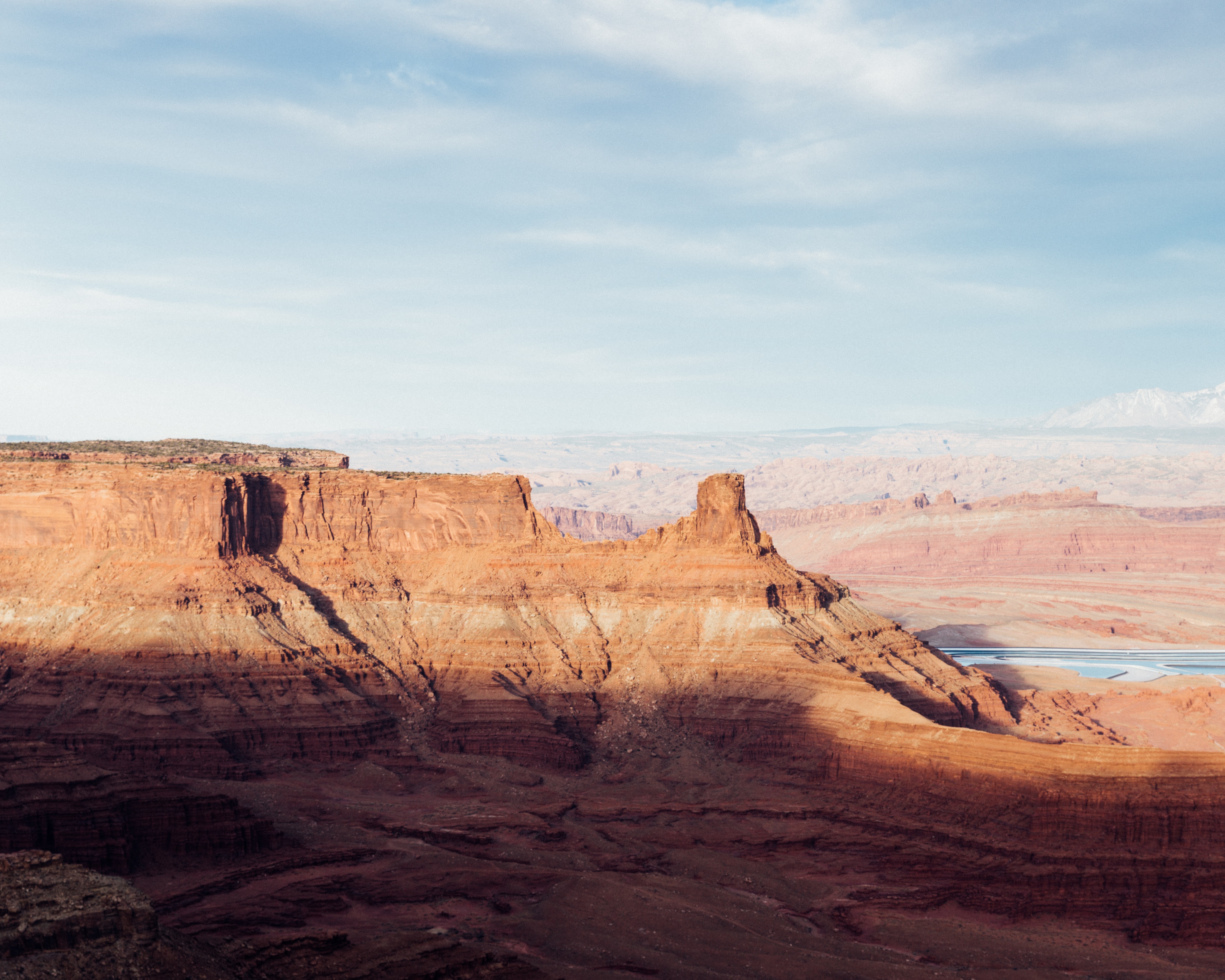
Over 5,000 acres of the high Utah desert awaits in Dead Horse Point State Park. It’s one of the piece de resistances of the Moab region. A land that’s true Wild West, it was once used by cowboys as a pen for mustang horses moving through the country. Today, it’s more of an off-the-beaten-track alternative to the Arches, with its very own soaring cliffs of red-tinted stone and rock.
The landscapes are undeniably spectacular. In the middle of it all, colossal buttes loom above the reflective waters of the Colorado River. Some get over 2,000 feet in total, sprouting hoodoos, boulders, and ridges of orange sandstone as they go. There are a number of world-class hiking paths that head to lookout summits atop the lot too.
The cost of entry to the Dead Horse Point State Park is another reason this is an attractive option among Utah state parks and Utah national parks. A single car with up to eight people can gain access for just $20. Meanwhile, cyclists can get into the reserve for a mere $4 – the whole Intrepid Trail System of MTB tracks is their oyster!
6. Natural Bridges National Monument
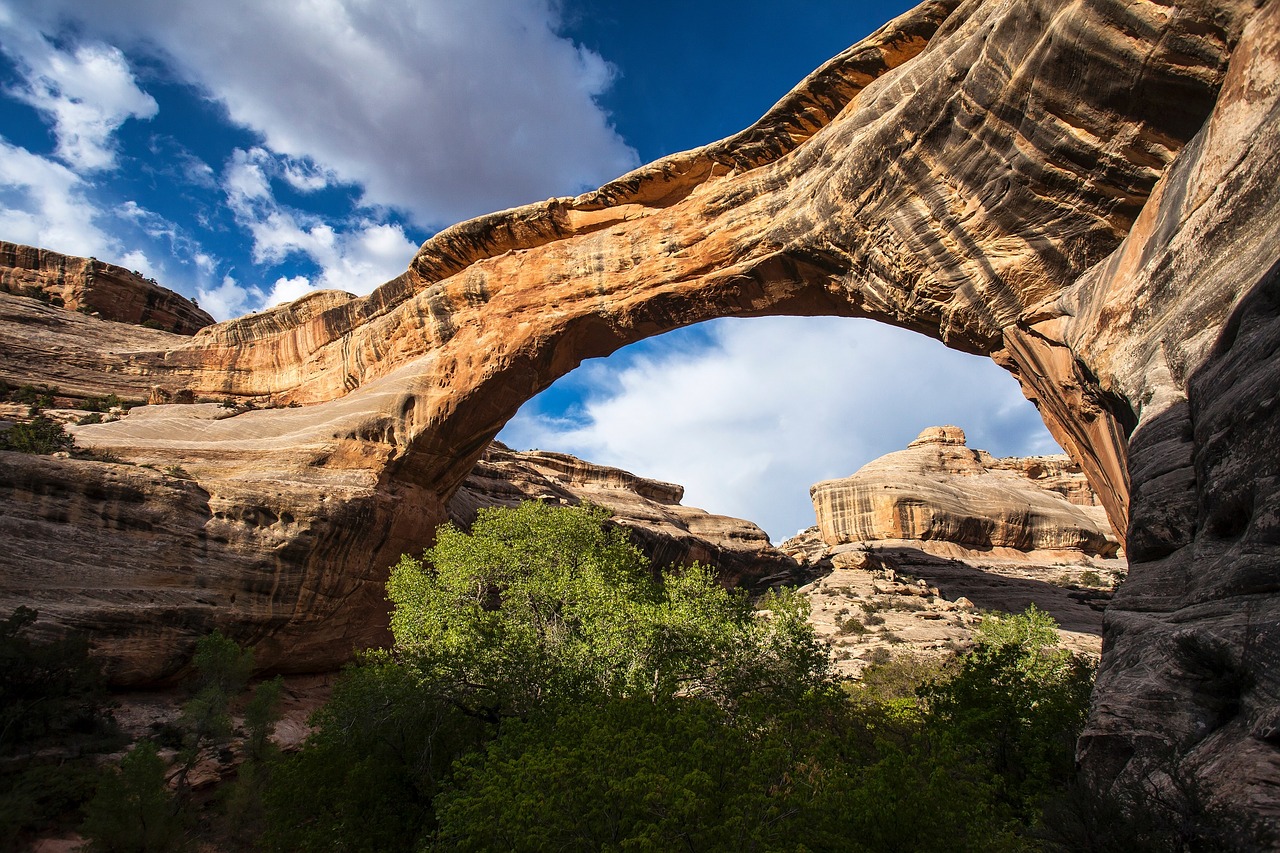
Just as its name implies, the Natural Bridges National Monument is another of the top places to go to see those all-famous Utah arches. A selection of three of the most amazing natural rock formations is the jewel in the crown. Named in the local Hopi Native American, they are thought to have been formed from millions of years of water erosion.
The Sipapu arch is the biggest of the lot. Spanning upwards of 70 meters in total, it’s among the largest of its kind on the planet. Around it, pockets of scrub and layered sandstone bluffs create a scene that’s ripe for adventurers and hikers. The nearby Owachomo Natural Bridge is another wonder to behold, with a precipitous drop that goes more than 106 feet above the canyon below.
There are oodles of great hiking trails that can take you into the depths of this awesome reserve. Unmissable ones include the Horse Collar Ruin overlook trail. From the panoramic points there, it’s possible to survey the old homes of the ancestral Puebloan people – a civilization that’s thought to have inhabited the hinterlands of Utah more than 700 years ago.
7. Bryce Canyon National Park
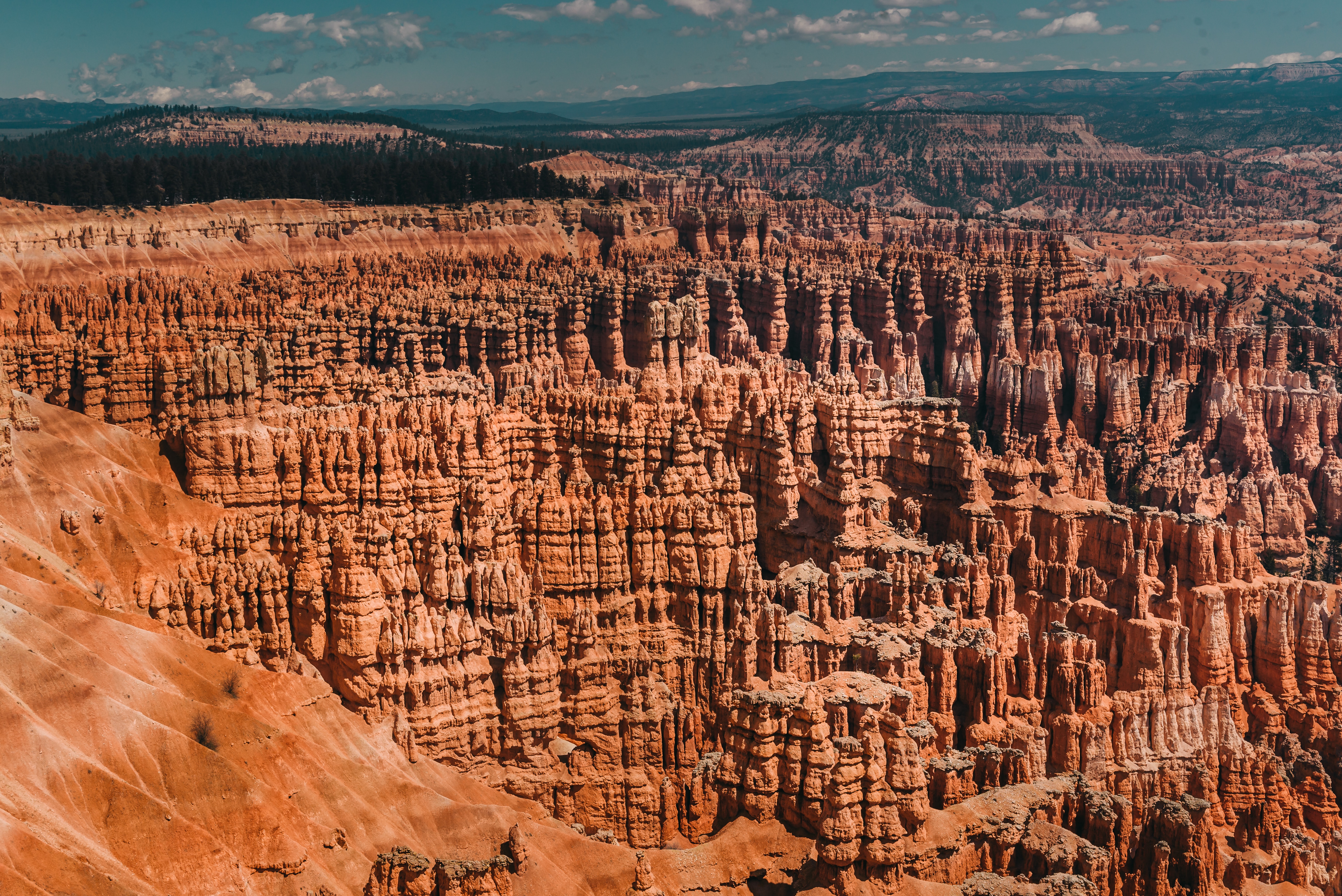
There’s really no photo or film that can prepare you for the sheer majesty of the Bryce Canyon National Park. It’s riddled with rock spires and clefts in stone and more crevices and depths and canyons than you can shake an old cowboy spur at. All of that unfolds over a wide opening in southern Utah, with ridges of pine-topped mountains set behind.
However, the Bryce Canyon National Park is most famed for its hoodoos. They inhabit the basin known as Bryce Amphitheater, spiking the skyline like the fingers of sleeping giants. Some of the best ways to see those include scenic drives (they come with more than 10 individual lookout points), or on foot. There are marked hiking paths like the Rim Trail and Bristlecone Loop, taking anything between one hour and eight for full days in the wilderness.
Bryce Canyon National Park is also a mecca for climbers and horse riders and brings in stargazers with the promise of some of the darkest night skies in all of America. In fact, over 7,000 stars reveal themselves to the naked eye in these parts!
8. Cedar Breaks National Monument
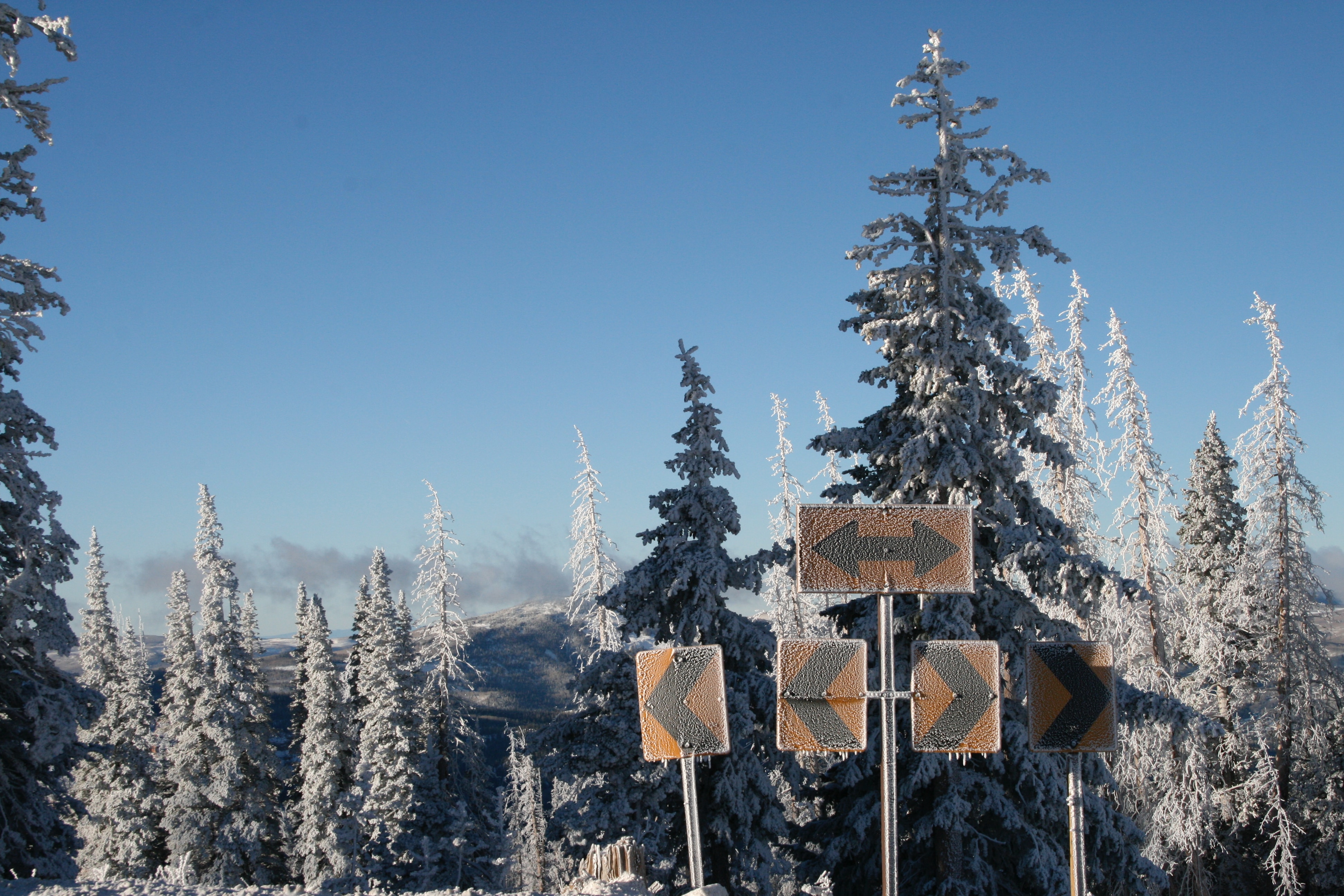
The Cedar Breaks National Monument is much like the aforementioned Bryce Canyon. It’s formed from orange-tinted stone and has some hoodoos spurting straight from its colorful valleys. However, the land is considerably more eroded and battered by the elements here. That’s due to increased altitude, which also brings unique flora like the sneezeweed, primrose, and Colorado columbine. That all blooms throughout the spring to dress the meadows and dash the peaks with wildflowers and Technicolor.
Because the Cedar Breaks National Monument clocks up altitudes in excess of 10,000 feet, it can be a much cooler affair than other Utah national parks and Utah state parks. Things are at their coolest in the winter months. If you do visit between November and March, be sure to check ahead to see that all the trails and roadways are open. Moreover, it’s wise to take extra precautions at that time of the year – heavy and sudden snowfall is common.
9. Goblin Valley State Park
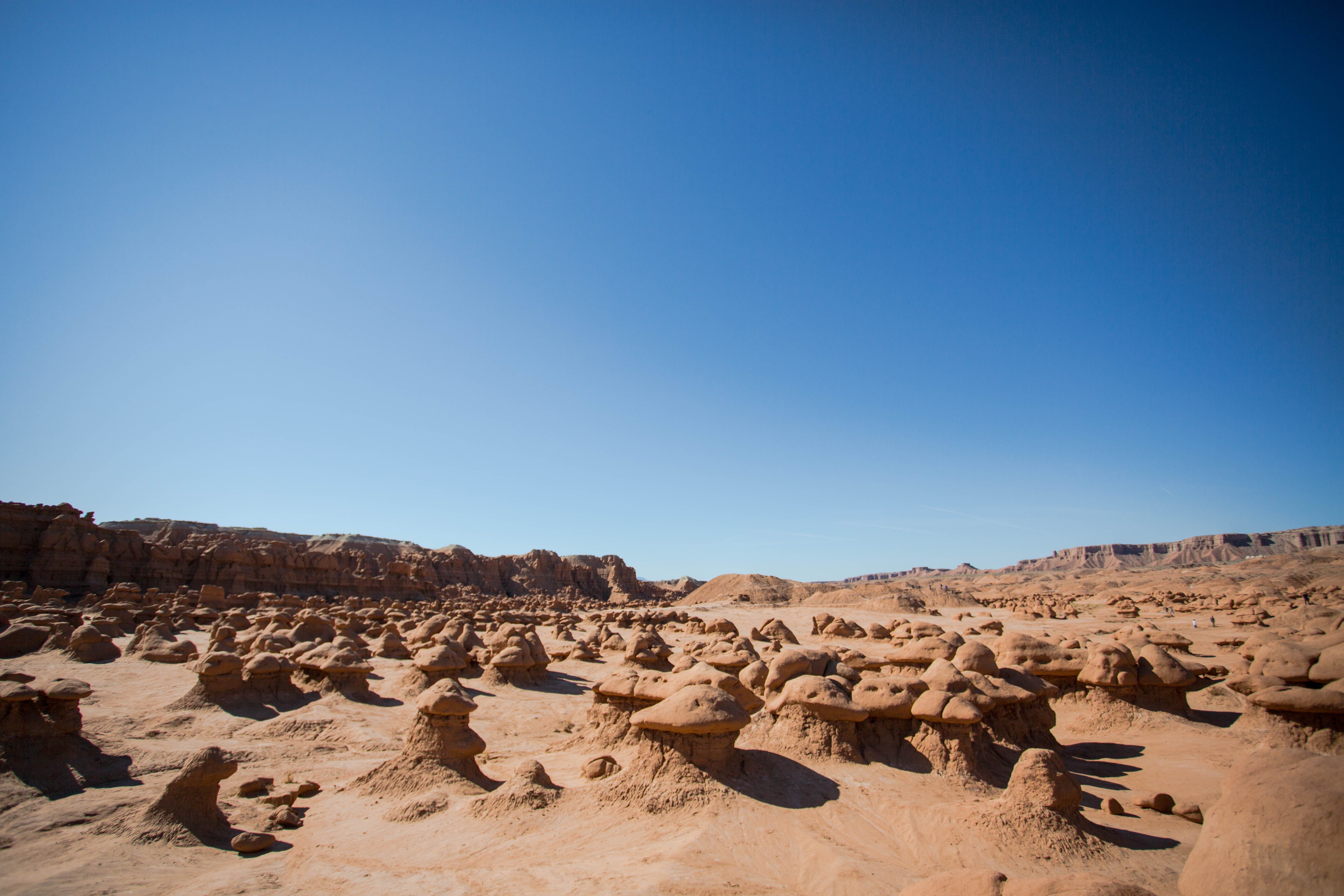
A sea of small stone figures peppering the orange earth is waiting to greet you at Goblin Valley State Park. These are actually miniature hoodoos that have formed naturally from attrition and erosion over the centuries. They have the appearance of fantastical creatures, which might be why the locals refer to them as the goblins.
This reserve sits in the midst of the dry and dusty San Rafael Desert. On the northern slopes of the Henry Mountains, it’s got a range of the features that are famed in Utah state parks. They include rock boulders, layered buttes, and Navajo sandstone. There are also some Utah arches present, like the Coffee table arch, stacked neatly atop two large boulders with a jaw-dropping view right behind.
10. Goosenecks State Park
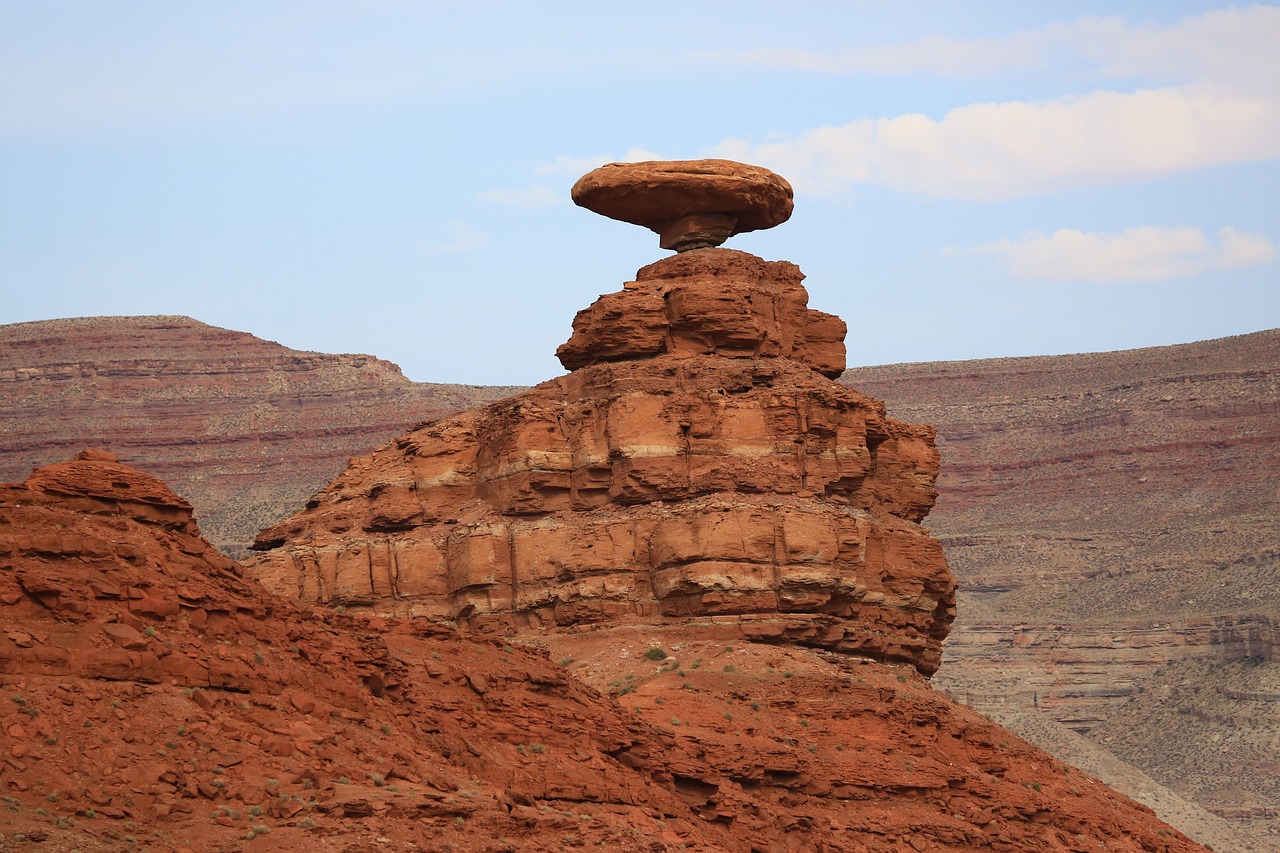
Check out the massive squiggle in the San Juan River that dominates the Goosenecks State Park! You’ll hardly be able to drop the camera lens. This is the meander to end all meanders. Find it weaving backward and forwards beneath huge stone cliffs that are dashed with colors of coffee, rust, and marble.
Most folks will rock up here for the stunning viewpoints that soar atop the river. They’re lofted a whopping 1,000 feet above the water itself. And they offer views of an area that’s thought to have been forged by over 300 million years of erosion.
If you’re keen on something a little more active, you could also hop on the local trails. They come in the form of the Goosenecks Viewpoint Trail, which does exactly what it says on the tin on the panorama front! And there’s the Honaker Trail, a gnarly walk through the canyons that were once a supply route for gold prospectors living in the mountains.
Couldn’t get enough from the hikes here in Utah state parks or national parks? We got you covered. Let your hiking spirit continues, find out where’s the best Swiss Alps you can possibly hike the next time when you visit.